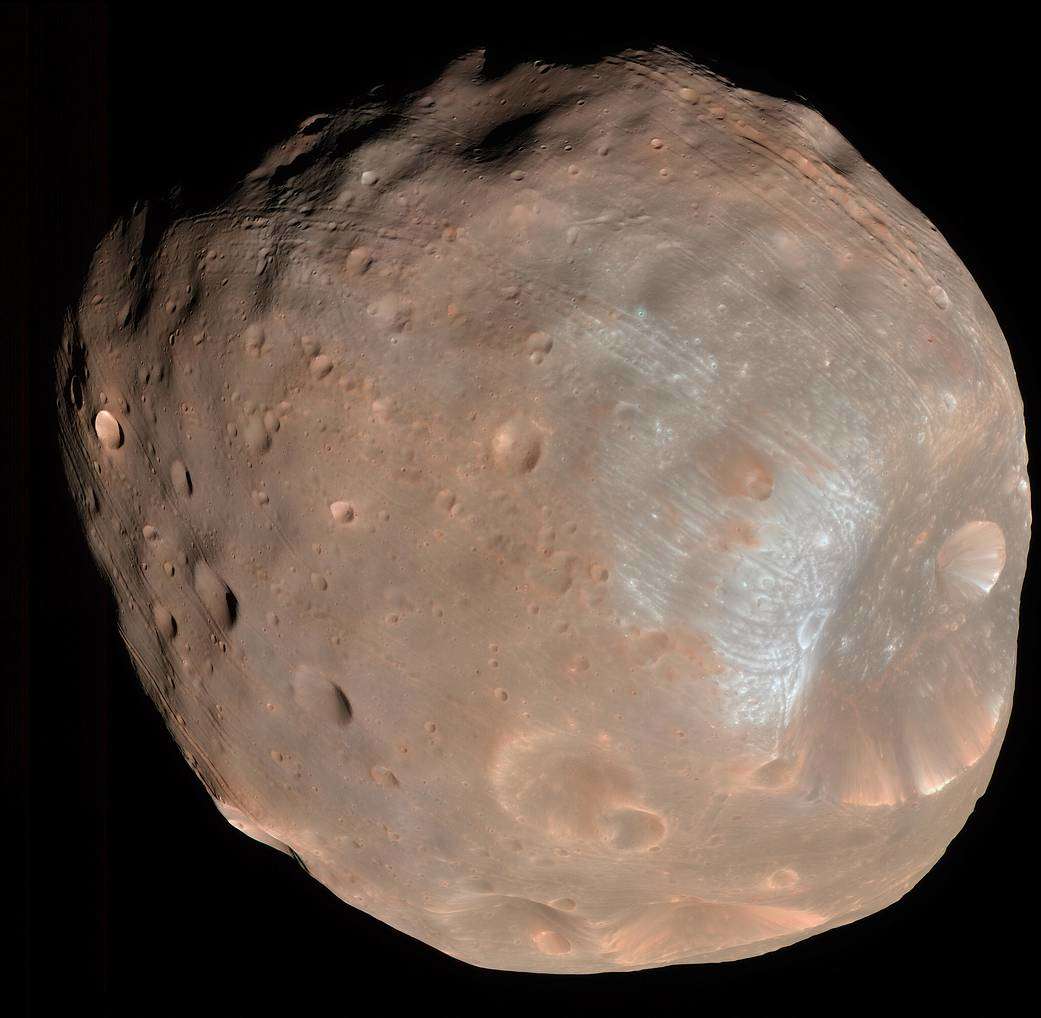Anyone looking for life on Mars should try probing its moons

After Perseverance had a setback with a regolith sample that refused to cooperate, it was a letdown for both Mission Control and millions of space geeks. That still doesn’t mean failure.
Mars, like Earth, is a diverse planet. Unlike Earth, it is a desert that has been radiation-bombed for billions of years and frozen over. The other thing it has in common with our planet is that it might have once had the right conditions to be teeming with… something. What that something is, or whether it only exists as little green men in sci-fi shows, is the question Perseverance is trying to answer on its sampling quest. Now another mission found a different way to ask.
JAXA’s MMX mission isn’t headed for Mars. It is instead focused on the Red Planet’s two moons, Phobos and Deimos, which may or may not be hiding the byproducts of asteroid collisions that slammed their home planet. Both moons are nearly sterile and may reveal pieces of Mars from beyond Jezero crater. Ryuki Hyodo and Tomohiro Usui of JAXA recently published a study on the upcoming mission in Science.
“We created a new category of biosignature that we can potentially find on Phobos’ surface; SHIGAI, or Sterilized and Harshly Irradiated Genes, and Ancient Imprints’,” Hyodo told SYFY WIRE. “This category only includes dead biosignatures. ‘Ancient Imprints’ includes any possible microbes and biosignatures that were extinct and fossilized on ancient Mars.”
While Phobos is closer to Mars and therefore has a better chance of having been a landing zone for ejecta, it is unlikely anything will be found alive on Phobos or Deimos because they have been sterilized by solar and cosmic radiation, so SHIGAI makes sense (“shi” also means “death” in Japanese). Any hypothetical life has probably been fossilized or at least left an imprint in the piece of Martian crust it once lived in. Recent collisions could have also sent ejecta with microbial fossils flying over to the moons of Mars, depending on where an asteroid crashed.
Fossils can still decompose over millions and billions of years, as we’ve seen on Earth. Though neither Phobos nor Deimos experience the same geological phenomena that affect ancient things under Earth’s surface, and being sterile helps, decay from radiation is a concern. What Phobos and Deimos actually are can also give scientists insight at their chances for being wastelands of Martian debris. It would be huge if they are former pieces of Mars. If they are D-type asteroids captured by the gravity of Mars, as some suspect, they could still have pristine stuff from the birth of the solar system, even the universe.
“We need further study to answer which and what environments are favored in terms of preservation,” said Hyodo. “The depth from the surface could be an important parameter to characterize the efficiency of radiation decomposition, because if it is deep enough, the radiation cannot penetrate.”
Between Perseverance and MMX, there is no saying which mission will succeed at finding traces of Martian life (if it ever existed to begin with). What is more likely is that one mission may unearth an answer the other was seeking, and vice versa. Perseverance may be crawling around one location, but Jezero Crater is a region with many layers that resulted from billions of years of geological phenomena. If some sort of microbial life-form is fossilized there, how deep it needed to go would probably have depended on where it could escape killer radiation.
MMX may not see the surface of Mars, but on Phobos or Deimos, there could be pieces of Martian crust lying around from before the planet was irradiated to death. Where and when Martian ejecta on either moon may have come from remains unknown. There may be pieces of crust from a pre-irradiation era during which Mars is assumed to have been more like Earth. Maybe there is ejecta from deeper than Perseverance can reach. It is also possible neither mission will come across anything alive or once-alive — but you have to launch something to find out.
Hyodo sees promise in both missions. Potential evidence of life is also not the only reason for bringing back samples from a Martian moon. MMX will sample materials from Phobos to tell us whether it is a D-type asteroid or a disembodied piece of the planet.
“Perseverance can potentially find biosignatures particularly relevant to Jezero crater, if present,” he said. “From Phobos, MMX can potentially find other relevant pieces of evidence of different ages and environments of Mars. Also, Perseverance might find living organisms in Jezero crater, while MMX will focus on diverse dead remains (SHIGAI).”
If pieces of the Earth have been found on the Moon, there could be unexplored chunks of Mars on its own moons, just waiting to be found.



























